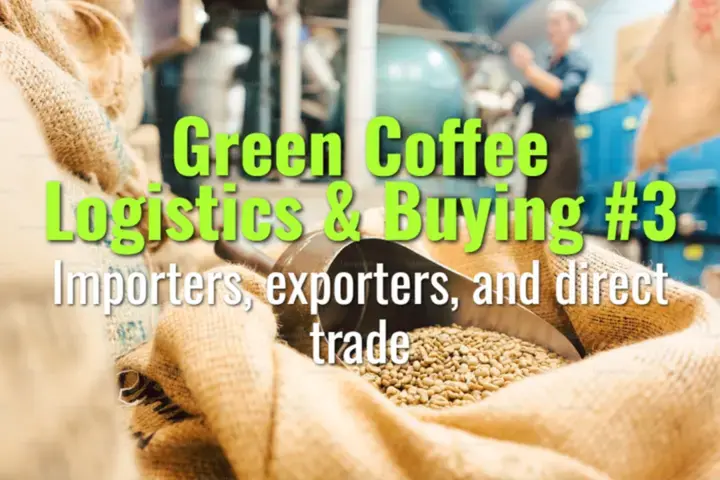Importers, exporters, and direct trade
This topic explains the roles of importers and exporters in coffee logistics, how direct trade differs, and the benefits and challenges of each system for producers and buyers.
- Coffee Basics Nerds
- 2 min read
Article 3 of 12 in Green Coffee Logistics & Buying/

Exporters
- Role: Handle logistics and documentation to move coffee from producing country to international buyers.
- Responsibilities:
- Manage milling, grading, and bagging.
- Secure export permits, phytosanitary certificates, and customs clearance.
- Coordinate container loading and shipping.
- Advantages: Provide expertise in compliance and reduce risk for farmers.
- Challenges: May add cost layers, sometimes reduce farmer margins.
Importers
- Role: Receive coffee in consuming countries and distribute to roasters.
- Responsibilities:
- Finance shipments and handle customs clearance.
- Store green coffee in warehouses.
- Offer spot and forward contracts to roasters.
- Advantages: Provide liquidity, reduce risk, and act as intermediaries.
- Challenges: Roasters may have less direct connection to farmers.
Direct Trade
- Definition: Buyers (often roasters) work directly with producers or cooperatives, bypassing some intermediaries.
- Features:
- Negotiated contracts with agreed prices and quality standards.
- Often includes visits, relationship building, and traceability commitments.
- Advantages:
- Higher premiums for farmers.
- Greater transparency and storytelling potential for roasters.
- Stronger long-term relationships.
- Challenges:
- Buyers must take on more risk and logistics management.
- Complex legal and customs processes.
- Not always scalable for large volumes.
Hybrid Models
- Many trades combine elements of all three:
- Direct trade relationship, but exporter handles logistics.
- Importer warehouses used for spot distribution while maintaining farm-level traceability.
Market Implications
- Exporters & importers: Ensure coffee flows efficiently in global trade.
- Direct trade: Adds value in specialty markets, aligns with consumer demand for transparency.
- Balance: Most supply chains use a mix, depending on scale, risk appetite, and buyer goals.
Lasting Importance
Importers, exporters, and direct trade represent the three pillars of coffee logistics. Together, they balance efficiency, risk management, and relationship-building, ensuring coffee moves from farm to roaster while meeting the needs of global markets.
You might also like:
- Tags:
- Lasting Importance
- Green Coffee
- Direct Trade
- Specialty Markets
- Market Implications
- Risk Management
- Ensure Coffee
- Supply Chains
- Ensuring Coffee
- Large Volumes
- Forward Contracts
- Higher Premiums
- Quality Standards
- Global Trade
- Farm Level
- Transparency Storytelling
- Consumer Demand
- Coffee Logistics
- Farm Roaster